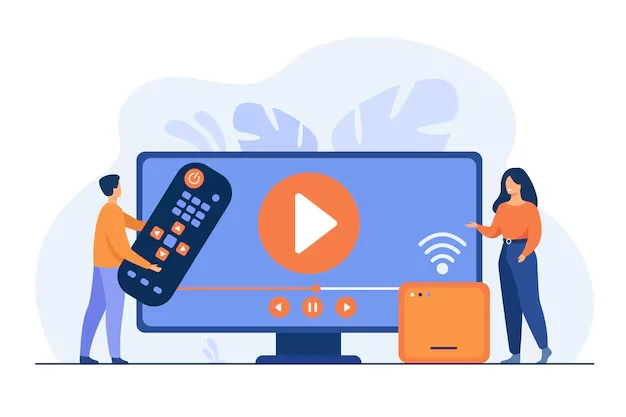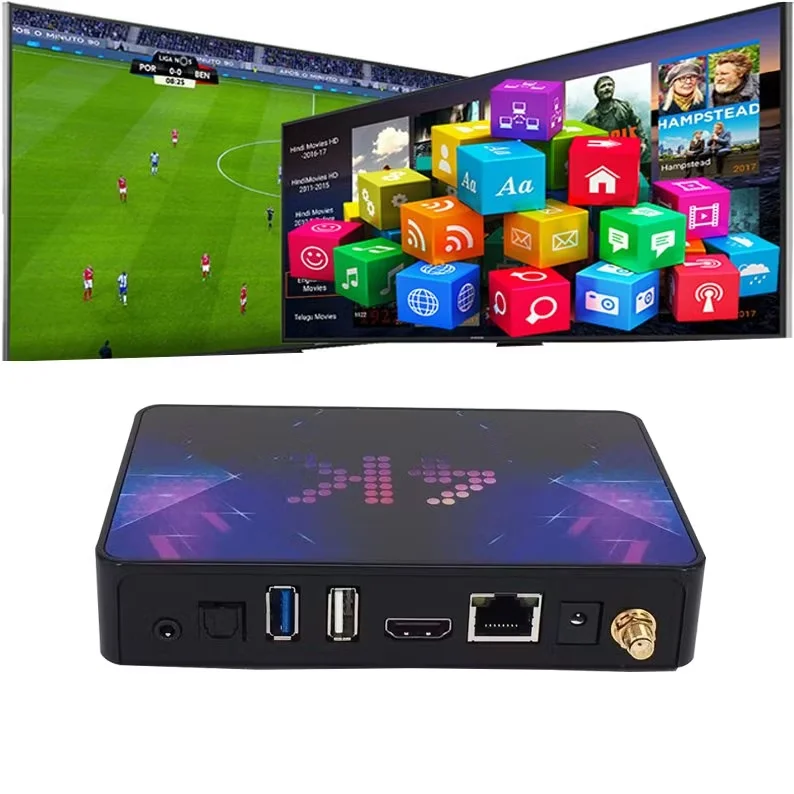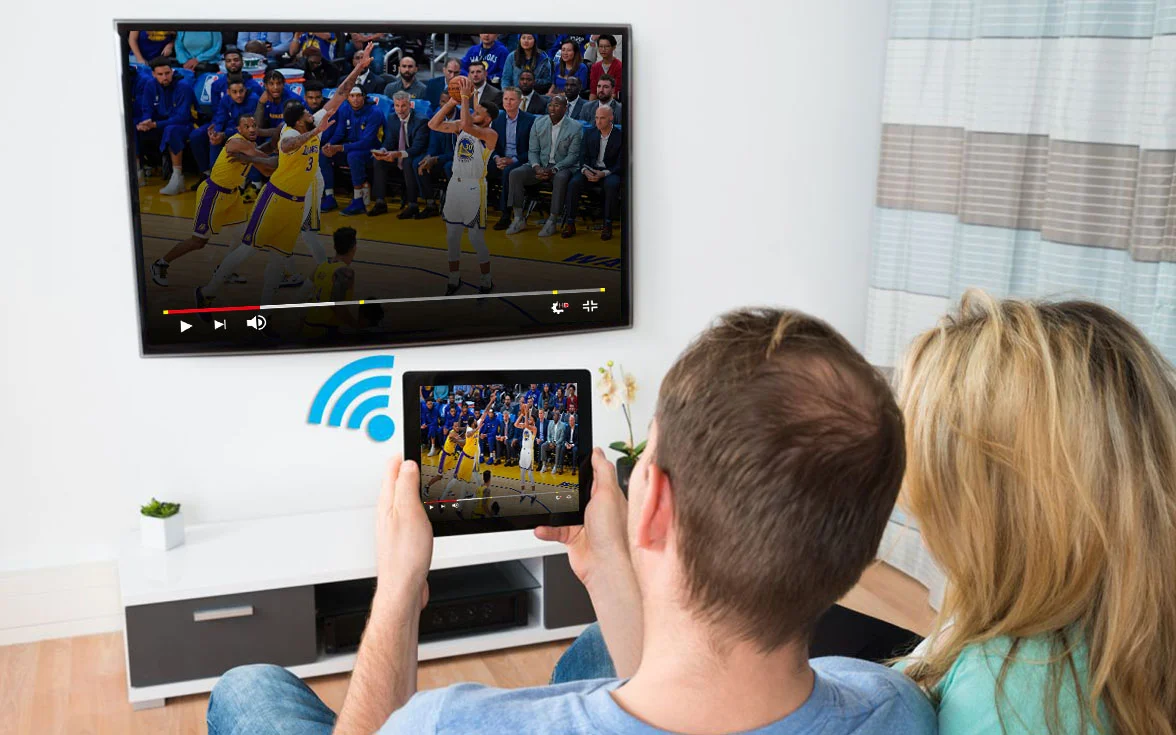What is IPTV Multi-Room and How Does It Work?
Ever found yourself in a household tug-of-war over the remote? One person wants to watch the big game, another wants the latest movie release, and someone else is trying to catch up on their favorite series. Traditional TV setups often mean only one screen gets the premium content at a time. But what if there was a way to stream different content on multiple screens simultaneously, all under one subscription? That’s precisely where IPTV Multi-Room comes into play. So, what exactly is it? Simply put, IPTV Multi-Room, often referred to as multi-connection IPTV, allows a single IPTV subscription to be actively used on multiple devices within the same household at the same time. Instead of needing separate subscriptions for the living room TV, the bedroom TV, and maybe even a tablet, a multi-room plan provides several concurrent streams.
How does this magic happen? It leverages the core technology of IPTV (Internet Protocol Television). Unlike traditional broadcast TV (cable or satellite) which sends signals broadly, IPTV delivers television content over computer networks using the Internet Protocol. Think of it like streaming video from Netflix or YouTube, but specifically for live TV channels, video-on-demand (VOD), and other television content. When you sign up for an IPTV subscription, your provider gives you access credentials (like a username/password or an M3U URL). With a standard single-connection plan, these credentials usually only allow one active stream at any given moment. If you try to log in on a second device while the first is active, the first stream might stop, or you might get an error message.
However, with an IPTV multi-connection plan, the provider specifically authorizes your account for a set number of simultaneous streams – typically two, three, four, or even five connections. This means the central IPTV server recognizes your credentials as valid for multiple concurrent sessions originating from your home network (usually identified by your public IP address). Each device (Smart TV, Firestick, smartphone, tablet, computer) running an IPTV player app connects independently to the provider’s server using the same subscription details. As long as the number of active streams doesn’t exceed the limit set by your plan, everyone in the house can watch what they want, when they want, on their preferred screen. It’s a seamless way to distribute entertainment throughout your home without complex wiring or multiple costly subscriptions. This flexibility transforms the viewing experience, eliminating scheduling conflicts and catering to diverse tastes within a single family or household. Understanding this basic principle is the first step towards unlocking a more personalized and flexible home entertainment system.

The underlying technology relies heavily on your internet connection’s stability and bandwidth. Each simultaneous stream consumes bandwidth, so a robust internet plan is crucial for a smooth multi-room experience, especially if you’re streaming high-definition (HD) or 4K content. The provider’s server capacity and infrastructure also play a vital role in delivering consistent streams across multiple devices. Reputable providers invest heavily in their servers to handle the load from numerous users and multiple connections per user. Finding a provider that offers affordable IPTV services with reliable multi-room options is key to maximizing the value and enjoyment of this technology. It’s about finding that sweet spot between cost and performance for your household’s needs.
The Unbeatable Benefits of Multi-Room IPTV for Households
Why are so many households making the switch to multi-room IPTV setups? The advantages are numerous and directly address common frustrations associated with traditional TV viewing and even single-stream IPTV plans. Perhaps the most significant benefit is flexibility and convenience. No more fighting over the remote or negotiating viewing schedules. With IPTV multiple connections, Dad can watch the football game in the living room, Mom can follow her cooking show in the kitchen, and the kids can enjoy cartoons in their playroom – all at the same time, using just one subscription plan. This simultaneous viewing capability transforms how families consume entertainment, allowing individual preferences to coexist peacefully. Each person gets their personalized viewing experience on their device of choice, whether it’s a large-screen TV, a tablet, or a smartphone.
Another major draw is cost-effectiveness. Consider the expense of multiple cable boxes or separate streaming subscriptions for different family members. A multi-room IPTV plan consolidates these costs significantly. While a multi-connection plan typically costs more than a single-connection plan, it’s almost always substantially cheaper than paying for several individual subscriptions or adding multiple set-top boxes to a traditional cable bill. For example, getting IPTV with 3 connections might only be marginally more expensive than a single connection but provides triple the utility. This makes premium entertainment accessible on multiple screens without breaking the bank. You can explore various IPTV subscription plans to find one that offers the right number of connections at an affordable IPTV price point for your budget.

Furthermore, multi-room IPTV enhances the overall viewing experience through personalization. Most IPTV apps, like the popular IPTV Smarters Pro, allow users to create profiles, manage favorite channels, and access personalized VOD libraries. When used in a multi-room setup, each user on their respective device can maintain their own preferences and viewing history, separate from others using the same subscription. This level of personalization ensures that everyone finds the content they love quickly and easily. The sheer volume of content available through IPTV services – often thousands of live channels from around the world, extensive VOD libraries, and series – becomes even more valuable when multiple people can explore it concurrently. It eliminates the bottleneck of a single screen and opens up a world of entertainment possibilities for everyone in the household. Ultimately, multi-room IPTV offers a modern, flexible, and budget-friendly solution for today’s diverse home entertainment needs, making it a compelling upgrade from older viewing methods.
Consider also the simplicity of setup compared to traditional multi-room solutions. Adding another TV with cable often requires scheduling a technician visit, drilling holes, and running coaxial cables. With IPTV, adding another screen is typically as simple as installing an app on a compatible device (like a Firestick or Smart TV) and logging in with your existing credentials, provided your plan supports the additional connection. This ease of expansion makes it incredibly convenient to add or move viewing locations within your home. Looking for cheap IPTV in 2024? Multi-room plans often represent the best value per screen.
Setting Up Your IPTV Multi-Room System: A Step-by-Step Guide
Getting your IPTV multi-room system up and running might sound technical, but it’s often surprisingly straightforward. The beauty lies in leveraging your existing home network. So, what are the essential steps? First and foremost, you need a suitable IPTV subscription that explicitly allows for multiple connections. When you buy an IPTV plan, ensure you select an option that specifies the number of simultaneous streams you need (e.g., 2, 3, 4, or more connections). Trying to use a single-connection plan on multiple devices simultaneously will likely result in buffering, freezing, or one of the streams being cut off.
Next, you need compatible devices for each room where you want to watch IPTV. This could include:
- Smart TVs (Samsung, LG, Sony with Android TV, etc.)
- Streaming devices like Amazon Firestick, Fire TV Cube, Nvidia Shield, or generic Android TV boxes.
- Smartphones and tablets (iOS and Android).
- Computers (using web players or dedicated apps like VLC or IPTV Smarters for desktop).
The key is that each device must be capable of connecting to the internet and running an IPTV player application. For many, the IPTV Smarters Firestick combination is a popular and cost-effective choice. You’ll also need a stable and reasonably fast internet connection. The required speed depends on the number of simultaneous streams and the quality (SD, HD, 4K). A general guideline is to have at least 15-25 Mbps per HD stream. So, for three simultaneous HD streams, a connection speed of 50-75 Mbps or higher is recommended to avoid buffering.

Once you have your multi-connection subscription, compatible devices, and a solid internet connection, the setup process generally follows these steps:
- Choose and Install an IPTV App: On each device you plan to use, you need to install an IPTV player app. Popular choices include IPTV Smarters Pro app, TiviMate, GSE Smart IPTV, Perfect Player, or provider-specific apps like MegaOTT. Many find using the same app across all devices simplifies the experience. You can often find guides on how to install IPTV Smarters Pro on Firestick or other devices.
- Enter Your Subscription Details: After installing the app, you’ll need to enter the credentials provided by your IPTV service. This usually involves choosing an API login (Xtream Codes API) or loading an M3U playlist URL. You’ll typically need a playlist URL, username, and password. Enter these details carefully into the app on each device. Many providers offer detailed setup guides.
- Load Channels and VOD: Once logged in, the app will connect to the provider’s server and download the channel list, electronic program guide (EPG), and any available Video-on-Demand content. This might take a few minutes.
- Test the Streams: Start streaming on one device. Then, go to another device, open the app, and start a different stream. Repeat for all devices you intend to use simultaneously, up to the connection limit of your plan. If all streams work smoothly without interrupting each other, your multi-room setup is successful!
Remember to connect your devices to the same home network (Wi-Fi or Ethernet). While some providers might allow connections from different IP addresses, most multi-room plans are intended for use within a single household under one IP. Check your provider’s terms of service regarding this. Following a good setup guide IPTV can make this process even easier.
Device Compatibility: What You Need for Multi-Room Streaming
One of the great appeals of IPTV, especially in a multi-room context, is its broad device compatibility. Unlike traditional cable which often requires proprietary set-top boxes for each TV, IPTV leverages the smart devices many households already own or can acquire affordably. But what devices work best, and what do you need to consider for a smooth multi-room experience? The core requirement is a device that can connect to the internet and run an IPTV player application. Let’s break down the most common options.
Smart TVs: Many modern Smart TVs, particularly those running Android TV (Sony, Philips, some TCL models), Tizen (Samsung), or webOS (LG), can directly install IPTV player apps from their respective app stores. This offers a clean setup without needing extra hardware. However, app availability and performance can vary depending on the TV’s operating system and processing power. Some users prefer dedicated streaming devices even if they have a Smart TV, often for better performance and wider app choices.
Dedicated Streaming Devices: These are often the preferred choice for IPTV due to their optimized performance, user-friendly interfaces, and extensive app support.
- Amazon Fire TV Devices (Firestick, Fire TV Cube): Hugely popular due to their affordability and ease of use. Sideloading apps like IPTV Smarters APK for Firestick is common and relatively simple using tools like the Downloader app. There are numerous guides available, such as how to download IPTV Smarters for Firestick or perform an install IPTV Smarters Pro Firestick setup.
- Android TV Boxes: These come in various forms, from budget-friendly options to high-performance devices like the Nvidia Shield. They run the official Android TV OS or a modified Android version, offering access to the Google Play Store and easy app installation.
- Apple TV: While sometimes having fewer dedicated IPTV app choices compared to Android, options exist, and performance is generally excellent.
- Roku Devices: Roku has stricter policies regarding IPTV apps, making it generally less suitable or more complicated for most IPTV services compared to Firestick or Android TV.

Mobile Devices and Computers: Don’t forget smartphones and tablets (iOS/Android) and computers (Windows/macOS/Linux). Numerous apps are available for mobile devices, making it easy to watch IPTV on the go (though multi-room plans are typically intended for single-household use). On computers, you can use dedicated desktop apps, Android emulators, or versatile media players like VLC which can often handle M3U playlists. Using apps like Smarters IPTV APK on Android devices is a common approach.
For a multi-room setup, consistency can be helpful. Using the same type of device (e.g., Firesticks in every room) or at least the same IPTV player app (like IPTV Smarters) across different devices can create a more unified and easier-to-manage experience. Ensure the devices you choose have sufficient processing power and RAM to handle streaming smoothly, especially for HD or 4K content. While older devices might work, they could struggle with buffering or app crashes. Ultimately, the flexibility to mix and match devices based on the room and user preference is a key strength of IPTV multi-room setups. You can easily find guides for specific setups, like using the Downloader for IPTV Smarters Pro on Fire TV devices.
Choosing the Right IPTV Provider for Multi-Room Access
Selecting the right IPTV provider is crucial for a positive multi-room experience. With countless options available, ranging from premium services to cheap IPTV providers, how do you make the best choice for your household? It’s about looking beyond just the channel list and considering factors specific to multi-connection usage.
First and foremost, verify multi-connection availability and policy. Does the provider explicitly offer plans with multiple connections? Don’t assume a standard plan can be used on multiple devices simultaneously. Look for specific packages labeled “Multi-Room,” “Multi-Device,” or indicating “2 Connections,” “4 Connections,” etc. Crucially, understand their policy on IP address locking. Most multi-connection plans are intended for use within a single household (same public IP address). Using connections across different locations might violate the terms of service and lead to account suspension. Clarify this before subscribing if you have any doubts. IPTV4Cheap, for example, offers clear multi-connection IPTV options.
Server Stability and Performance is paramount, especially when multiple streams are active. A provider might offer thousands of channels, but if their servers are overloaded or unreliable, you’ll experience buffering, freezing, and connection drops – issues that are amplified when multiple streams are running concurrently. Look for providers known for stable servers and sufficient bandwidth allocation. Reading reviews (from independent sources, if possible) and taking advantage of short trials, like an IPTV one-month subscription or even shorter free trials if offered, can help gauge performance before committing to a longer plan like an IPTV 1-year subscription.

Channel Lineup and VOD Library still matter, of course. Ensure the provider offers the channels and types of content (e.g., sports, movies, international channels, specific VOD) that your household wants to watch across different rooms. Check if the channel list is well-organized and if the Electronic Program Guide (EPG) is accurate and reliable, as this significantly impacts usability across all devices. Some providers specialize in content for specific regions, like IPTV for USA or IPTV Canada.
Pricing and Value are key considerations. Compare the cost of multi-connection plans across different providers. Look at the price per connection to determine the value proposition. Some cheapest IPTV providers might offer attractive multi-room deals, but double-check their reputation for stability and support. Consider the length of the subscription – longer plans often offer better monthly rates but require a larger upfront commitment. Explore different IPTV pricing structures to find what fits your budget.
Finally, don’t overlook Customer Support and Ease of Setup. If you encounter issues, especially with multiple devices, responsive and helpful IPTV customer service is invaluable. Check their support channels (ticketing system, email, chat) and typical response times. Additionally, consider how easy they make the setup process. Do they provide clear instructions, M3U URLs, EPG links, and support for popular apps like IPTV Smarters Pro setup? A provider that simplifies the initial configuration across multiple devices saves time and frustration. Finding a balance between these factors will lead you to the best cheap IPTV service that meets your multi-room needs effectively.
Understanding Multi-Connection Plans and Pricing
Navigating the world of IPTV pricing can sometimes feel complex, especially when multi-connection plans enter the picture. How do providers structure these plans, and what should you expect in terms of cost? Understanding this helps you make an informed decision and find the best value for your household’s simultaneous streaming needs. Essentially, multi-connection plans are tiered upgrades from a standard single-stream subscription. Providers recognize that many households have multiple screens and viewers with diverse tastes, offering these plans as a convenient and often cost-effective solution compared to buying separate subscriptions.
The most common structure is offering plans based on the number of simultaneous connections allowed. You’ll typically see options like:
- 1 Connection: The standard, cheapest plan, allowing only one stream at a time.
- 2 Connections: Allows two devices to stream concurrently from the same IP address.
- 3 Connections: Allows three simultaneous streams.
- 4 Connections: Allows four simultaneous streams.
- 5+ Connections: Some providers offer plans with even more connections for larger households or specific needs.
The IPTV price increases incrementally with each additional connection. However, the cost per connection usually decreases as you add more. For example, a 2-connection plan won’t typically cost double the price of a 1-connection plan; it might be 1.5 times the price. Similarly, a 4-connection plan might be significantly less than four times the cost of a single connection. This scaling makes multi-connection plans attractive from a value perspective if you genuinely need simultaneous streams.

When comparing IPTV plans, look at the total cost and divide it by the number of connections to understand the effective price per stream. This helps in comparing different providers fairly. For instance, Provider A might offer 3 connections for $20/month (~$6.67/connection), while Provider B offers 2 connections for $15/month ($7.50/connection). If you need three streams, Provider A offers better value per connection. Always check the subscription duration as well. IPTV yearly subscription options usually offer the lowest monthly equivalent cost compared to 9-month IPTV subscription or monthly billing, but require a longer commitment. Some users prefer the flexibility of a buy 1 month IPTV plan initially to test the service.
Be wary of exceptionally IPTV low price offers, especially for multi-connection plans. While finding affordable IPTV subscription deals is possible, unrealistically cheap services might compromise on server stability, channel availability, or customer support, leading to a frustrating multi-room experience. Look for transparent IPTV subscription cost structures without hidden fees. Reputable providers like Channels4Cheap.com clearly outline their IPTV deals and connection limits. Ultimately, the goal is to find a plan that provides the right number of connections for your household at a price point that reflects reliable service and good value, ensuring everyone can watch their preferred content without interruption.
Troubleshooting Common Multi-Room IPTV Issues
While IPTV multi-room setups offer fantastic flexibility, they can occasionally present challenges. When you have multiple streams running simultaneously, issues that might be minor on a single stream can become more noticeable or complex. Understanding common problems and how to address them can save you a lot of frustration and keep the entertainment flowing smoothly across all your devices.
Buffering or Freezing on Multiple Devices: This is perhaps the most common complaint. If multiple streams are constantly buffering, the primary suspect is usually your internet connection or home network.
- Check Internet Speed: Run a speed test (while other devices are temporarily disconnected if possible) to ensure you’re getting the speeds you pay for. Remember, each HD stream needs ~15-25 Mbps. If three streams are running, you need sufficient bandwidth for all of them *plus* overhead for other internet activities. Consider upgrading your internet plan if necessary.
- Router Performance: Your Wi-Fi router might be a bottleneck. Older routers struggle to handle multiple high-bandwidth streams concurrently. Ensure your router is reasonably modern (Wi-Fi 5 or Wi-Fi 6 recommended) and positioned centrally. Consider using wired Ethernet connections for stationary devices like TVs or streaming boxes, as Ethernet provides a more stable connection than Wi-Fi.
- Provider Server Load: Sometimes, the issue isn’t on your end but with the IPTV provider’s servers, especially during peak viewing times (evenings, major sports events). If buffering happens sporadically across all devices at specific times, it might be server-side. A short IPTV one month subscription can help test this before a long commitment.

“Maximum Connections Reached” Error: If you see an error message indicating you’ve exceeded your connection limit, even though you believe you haven’t, try these steps:
- Check Active Devices: Ensure no unused devices are still actively streaming or logged into the app in the background. Properly exit the IPTV app on devices not in use.
- Account Sharing Issues: Verify that no one outside your household (or IP address, depending on provider rules) is using your credentials. Change your password if you suspect unauthorized access.
- Provider Glitch: Occasionally, the provider’s system might not correctly register that a connection has ended. Restarting your devices and router can sometimes help. If the problem persists, contact your IPTV customer service. They might need to reset your connections on their end.
Inconsistent Performance Across Devices: If one device streams perfectly while another constantly buffers, the issue likely lies with the poorly performing device or its connection.
- Device Capability: Older or lower-spec devices (like very old Firesticks or underpowered Smart TVs) might struggle with demanding streams or newer app versions. Test the subscription on a known good device to isolate the problem.
- Wi-Fi Signal Strength: The device experiencing issues might be too far from the router or in an area with poor Wi-Fi reception. Try moving the device closer or using a Wi-Fi extender (though extenders can sometimes introduce latency). Again, a wired connection is often the best solution if feasible.
- App Issues: Try clearing the cache and data for the IPTV app on the problematic device, or even reinstalling it. Ensure you’re using the latest compatible version of the app, perhaps by checking a guide for IPTV Smarters Pro APK download if that’s the app you use.
Systematically checking your internet speed, router, device capabilities, app settings, and connection limits will help you diagnose and resolve most common multi-room IPTV issues, ensuring a stable and enjoyable viewing experience for everyone. Don’t hesitate to consult your provider’s IPTV guide or support if problems persist.
The Future of Home Entertainment: IPTV Multi-Room Trends
IPTV multi-room technology has already reshaped how many households consume television, moving away from the single-screen bottleneck towards personalized, simultaneous viewing. But what does the future hold? Several trends suggest that multi-room IPTV will become even more integrated, sophisticated, and central to home entertainment ecosystems.
One major trend is the increasing demand for higher quality streams across multiple devices. As 4K TVs become standard and 8K emerges, users will expect their multi-room setups to handle these ultra-high-definition formats flawlessly. This puts pressure on both internet service providers (ISPs) to offer faster, more reliable broadband and on IPTV service providers to upgrade their server infrastructure and encoding technologies. We can expect providers to optimize streams better and potentially offer tiered plans based not just on connection count but also on maximum stream quality (e.g., guaranteed 4K streams on multiple connections). Finding high-quality IPTV subscription options capable of this will be key.
Integration with smart home ecosystems is another significant area of development. Imagine controlling your IPTV streams across different rooms using voice commands via Alexa, Google Assistant, or Siri. “Play the news on the kitchen TV,” or “Switch the living room stream to the sports channel.” We’re already seeing basic integrations, but the future likely holds deeper connections, allowing IPTV services to interact seamlessly with smart lighting (dimming lights for movie mode), sound systems, and other connected devices, creating truly immersive multi-room experiences. This requires standardization and collaboration between IPTV app developers (like those behind Smarters Pro APK) and smart home platforms.

Personalization will likely become even more granular. Beyond individual profiles and favorite lists, AI could play a larger role in recommending content based on viewing habits across all devices within the household network. User interfaces might adapt dynamically based on who is watching and on which device, offering tailored suggestions and layouts. Cloud-based DVR functionalities, already present in some services, could become more robust, allowing recordings to be scheduled and accessed seamlessly from any authorized device within the multi-room setup.
Furthermore, the lines between live TV, VOD, and other streaming services may continue to blur. IPTV platforms might evolve into unified entertainment hubs, integrating access not just to traditional channels but also potentially linking or bundling other popular streaming apps, offering a single interface and billing point for a wider range of content. While regulatory and competitive challenges exist, the convenience for users is a strong driving force. The challenge for providers will be to offer these advanced features while maintaining affordable IPTV pricing structures. As technology evolves, IPTV with multiple connections is poised to become the standard, offering unparalleled flexibility and personalization for the modern connected home. Keeping an eye on providers known for innovation, like IPTV4Cheap, can give insights into upcoming features and capabilities.